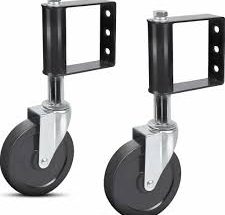Amazon has positioned itself as the most important e-commerce platform in the world. That is why many online businesses, in addition to selling through their ecommerce, use this marketplace as a sales channel.
One of the things that Amazon stands out for is always offering the customer the best shopping experience. This is the reason why users fully trust this platform to make their purchases. And, for this reason, it is the marketplace with the most transactions on the planet.
If you want to know more about how to sell on Amazon as an additional income channel for your ecommerce or online store , here are some important things you should know.
Benefits of selling on Amazon
If you decide to sell on Amazon, these are the three main benefits you will get:
- Customer confidence and security. The user knows that in case of any problem, Amazon will respond quickly. And that will also save you time and money.
- Simple registration. Regardless of the business model you choose, selling on Amazon is intuitive. To start, you don’t need to invest anything or worry about any design, you just have to take care of your catalog.
- Greater visibility. Without the need to do SEO, your reach will multiply, since it is a platform with a lot of traffic. You can even shuffle if you have the opportunity to sell to other countries.
How to sell on Amazon? Types of business models
There is no set pattern for choosing a model that works best with certain products. There are vendors that one works well for them and others do not work the same.
For you to choose well, let’s see what are the options that an individual has to sell their items on Amazon:
FBM
Here, the seller uploads the listings with their products, fills in the information and in a short time they can already be selling.
In the product file, just below the delivery date, the following sentence will appear ‘Sold and shipped by + name of the seller’.
These are the outstanding features of this model:
- The seller is responsible for the sale, shipping, returns and post-sale service.
- It is the easiest option, although with some products it is not profitable.
FBA
This model works as follows:
- The seller finds a supplier who manufactures the product or manufactures it himself.
- Then, by selecting the FBA model, you send all your stock to Amazon so that it is responsible for storing, shipping and handling everything (including returns).
Obviously, Amazon will charge you a percentage for this management. For logistics management, it will range between 2 and 3 euros (at the date of publishing this post), and depending on the storage time, the cost will range between 26 euros per cubic meter in low season (the first 6 months) up to 1000 euros per cubic meter (more than 12 months).
In the product file, it will appear with the phrase ‘Sold by (seller’s name), Fulfilled by Amazon’.
amazon seller
This model corresponds to the Amazon Vendor Central program.
To be an Amazon Vendor you cannot register, but you have to receive an invitation from Amazon itself.
Its operation is that the seller makes his shipment to the Amazon warehouse. And these are responsible for both setting the price of the product and establishing the percentage that the seller takes.
This is done through an algorithm (it cannot be negotiated). In the product file, this model will be reflected as ‘Sold and shipped by Amazon’.
5 Steps to Sell on Amazon
After knowing the sales regimes that exist, these are, in broad strokes, the steps and strategies that you must follow to sell on Amazon:
1. Do a preliminary product and market analysis
On Amazon there are so many categories and products that it is not worth doing an analysis above.
Take your time to research the market, to validate the volume of searches (for the product you are interested in), sales, the competition and the possibilities of differentiation. To do this, you can help yourself with these tools: Jungle Scout and Viral Launch.
In this sense, you can take advantage of Amazon’s potential if:
- You get a good profit margin.
- Your product does not have much competition.
- You do not have your own online store.
Also, keep in mind what is the commission that Amazon receives for each sale of your product, which usually varies depending on the category.
2. Choose the right sales model
After seeing that your product has possibilities to compete on Amazon, you must choose a sales regime. These are the ones that we have explained in the previous point.
3. Upload your products
After choosing the method of sale and registering, you will have to upload the catalog of your products on Amazon, through Amazon Seller Central, following the instructions.
If the products you want to sell are in the Amazon catalog, you only need to locate it by searching for its name or ASIN. But if it is not created, you must fill in all the fields, even the non-mandatory ones.
In addition, we recommend that you do keyword research to find out how users search and add those keywords to the titles or description. Here the image is also important, they must be of the highest quality.
4. Stand out from others by winning the Buy Box
When several sellers bid for the sale of the same product, only one appears linked to the purchase button, the so-called Buy Box.
And how do you win the Buy Box? Amazon gives points to those who:
- They have a good sales history, with at least 3 months of experience.
- If you chose the FBA regime.
- If the product delivery time does not fall below 97%.
- They give the best final price of the product.
- Positive reviews and ratings.
- Response time in 24 hours.
5. Get traffic to your products
Amazon rewards the best-selling products, giving them more visibility and offering them the Buy Box.
But how do you drive traffic to your products? Keep in mind Amazon’s pay-per-click platform, where you can run campaigns based on keywords and bids in real time. Only then will these products be placed above those positioned organically.
In addition to this marketplace, you can promote your products through other channels such as social networks, email marketing, SEO and all those actions that you can think of to generate traffic.
Amazon is very powerful, but it does not work the same for all sellers, nor for all products. The key is to carefully study the market and products, spy on the competition, analyze search and sales volumes, and make decisions based on it.



